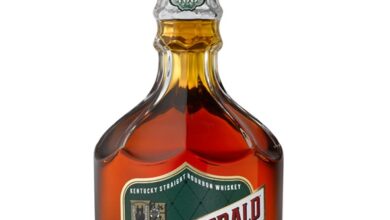The Four Grain Bourbons
Is Four Grain Bourbon Finally Poised To Deliver On Its Promise?
By Richard Thomas
When the micro-distilling movement first began to take off six or seven years ago, it just happened to happily coincide with the great rye whiskey shortage. That shortage was an opening for many new distillers, allowing them to gain a market foothold by making small barrel rye whiskey, made to order to fill the gaps in supply caused by the sudden, mixologist-driven craze for rye.
Another major tactic for gaining that foothold has been to go where “Big Whiskey” was not. A successful example was to enter the American malt whiskey category, successfully plied then by Balcones and now by Westland, among many others. Some of those unexploited whiskey niches, however, didn’t turn out quite so well, niches like four grain bourbons.
The traditional bourbon mashbill is based on corn, as mandated by Federal law, and uses a small portion of malted barley as a source of enzymes to drive the conversion of grain starches into sugar in the mash. The third (and usually final) grain is there as the flavoring element, either spicy rye or floral wheat. Four grain bourbon brings both flavoring grains into the mashbill, promising to create a whiskey that is both floral and spicy.

(Credit: Watershed Distillery)
Four Grain Flops?
Initial entries into the four grain bourbon category included Tuthilltown’s Hudson Four Grain and KOVAL’s Four Grain Whiskey. Although Hudson Four Grain was generally better received than it’s over-hyped Baby Bourbon, the problem there is that it was so described by the same people who hyped Hudson Baby Bourbon in the first place, and for its part KOVAL’s Four Grain received average marks overall.
Despite these initial fumbles, four grain bourbon was still an area where “Big Whiskey” was not, and others have since entered the field. Ohio’s Watershed Distillery was most notable in this respect, because their Watershed Bourbon wasn’t a standard four grain, but instead a “double wheater,” combining spelt (a disused type of wheat) with the standard red winter wheat to double down on the wheated bourbon flavor profile, and with rather enjoyable results.
Watershed’s twist on the four grain bourbon proved to be just the first of a new wave of entries into what was becoming a moribund category. Rochester, New York’s Black Button Distilling, Pennsylvania’s Bluebird Distilling, and South Carolina’s Highwire Distilling have all released a Four Grain Bourbon in the last year. Feedback on another new entry, A.D. Laws Four Grain Bourbon from Colorado, has been mostly positive.

(Credit: TTB)
And now “Big Whiskey” is getting in on the four grain bourbon act as well. The TTB, the Federal agency responsible for regulating much of what goes on in the liquor business, released a label for a forthcoming Buffalo Trace whiskey, Colonel E.H. Taylor Four Grain Bourbon.
Given that the Taylor Four Grain is a bottled-in-bond bourbon, like most Colonel E.H. Taylor releases, work on it must have started around the same time KOVAL and Tuthilltown released those initial four grain bourbons. The promise of a minimum four year old, 100 proof four grain whiskey might finally yield what the category promised all along: a bourbon that is brings the best of spicy rye and floral wheat together into the same bottle.




